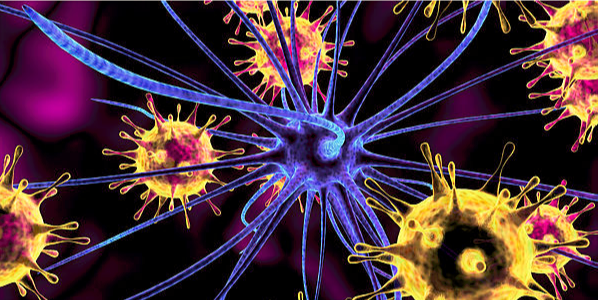
Frontiers in pain research
One important direction of pain research is to classify neurons that are involved in the pain transduction pathway. With further functional identification and neural circuit tracing, the neural network of pain can be ultimately decoded. This strategy not only applies to pain research, but also to other fields in neuroscience.
“Breakthroughs are very likely to be made first on the dorsal root ganglion (DRG) neurons, due to their advantages of easy operation.” says Prof. Xu Zhang. The DRG neurons possess nearly ten thousand genes, regardless of the size or function of the neuron. Of them over 2000 genes are differentially expressed by 5 folds or more. Combining neural circuit tracing by viral tools, functional test by electrophysiology and behavioral test, the whole picture of DRG neurons can be revealed.
Breakthroughs are very likely to be made first on the dorsal root ganglion (DRG) neurons, due to their advantages of easy operation.
Dr. Xu Zhang
In the next few years, the neuroscience community will ‘decompose the nervous system at a higher level’. The community is working together towards this goal, presenting us with a clearer view of the nervous system. Our current work is to set up a normal reference model at this level. Only by using this normal reference can we unravel abnormality in animal models or with transgenic techniques.
To learn more about Dr. Zhang’s work on somatosensory neuron type, check out this paper.
Big Data-Driven Research in Studying Pain
“The era of big data is coming, for sure,” says Dr. Zhang. As a pioneer of using big data strategy to study pain, his research benefited tremendously from the new strategy and technology. The gene profiling of DRG is like a dictionary, providing unprecedented depth of understanding and larger picture of pain study.
From life science to pain research, multidisciplinary coordination is always needed to explore gene networks within a cell. Big data approaches like large-scale sequencing, computation and data statistics are becoming more and more essential, and will make basic research more objective and accurate. The Chinese government has been forethoughtful and gave strong financial support for the project of Mapping Brain Functional Connections, proposed by a small group of neuroscientists a few years ago and the achievements are now for all to see. This proves the power of big data in neuroscience and is a great start to a promising future of better understanding the brain.
Admittedly, the current practice of big-data driven research is still at its preliminary stage in China. Databases supported by advanced technology and professional management are in great need for further development of China’s big-data driven research. “Particularly, I hope China can play a role in international data resource network to facilitate data sharing worldwide, thus make scientific progress more efficient.” Dr. Zhang adds.
Big data-driven research requires technical and policy support for data management. Springer Nature pioneered in supporting scientists to share data in smooth and in order. Click here to learn more about data policy and data support.
How Basic and Clinical Researches Are Combined in Pain Research?
“Basic research has greatly advanced our understanding of pain. Patients with chronic pain require much more attention and more professional treatment,” Dr. Zhang points out.
Long lasting pain may lead to alterations in brain structure which are not the direct outcome from diseases like periphery nerve injury, inflammation or cancer but rather subsequent effects of these diseases. Brain structure alterations would cause encephalopathy, resulting in a range of problems such as mania, depression, sleep disorders, learning and memory disorders and personality defects. From a clinical or medical perspective, it has been more and more accepted that “pain is a brain disease”, rather than “a local symptom” as it was previously recognized .
The strategy of pain treatment shall be influenced by the constant advancing of people’s knowledge. In light of that, an utmost important thing to do is to provide patients with better disease diagnosis and treatment, especially timely treatment of pain to avoid its progression into a chronic status. In China, joint efforts are being made by the government, hospitals and academic societies. Medical treatment combination, which is promoted by National Health and Family Planning Commission of the People’s Republic of China and coordinated by the China-Japan Friendship Hospital and joined by hundreds of hospitals, is the channel to benefit the public with the latest research outcomes and translational applications in the pain field. The goal is to build a comprehensive pain management and treatment system, so that the “pain clinics” can be as widespread as dental clinics, thus benefitting the pain patients.
Dr. Xu Zhang, an Academician of the Chinese Academy of Sciences, from Institute of Neuroscience, CAS, is mainly interesting in the molecular and cellular mechanisms underlying pain and cognitive disorders. His lab used gene profiling strategy to identify pain modulators and underlying mechanisms, thus uncovered new regulators of pain transmission and new molecular pathways providing potential targets for clinic analgesia and drug discovery.
Comments